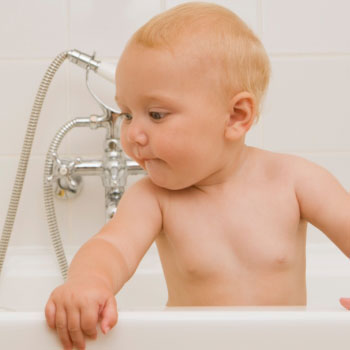Household Safety Hazards

You’ve got the house babyproofed with all the gadgets and preventive tools that should keep young kids out of the dangerous areas of your home. No worries, right? Wrong. There are hidden hazards in the home that can do serious damage to a child. Be extra-careful and warn children of their risks. Start in the bathroom. Those safety suction cups on the bottom of bath seats aren’t always reliable. Bath seats and rings are convenient for Mom but can cause a child to be trapped underwater if they come loose and topple forward. It takes just a couple of minutes to drown, so never leave a child in the bathroom unattended, even if he sits in a chair. Bath products such as oils and soaps should have child-resistant packaging because of the presence of liquid hydrocarbons, a substance that can cause irreversible lung damage. Be vigilant about keeping these substances and those that contain mineral oil away from children. It may seem like you’re getting a great deal by investing in baby gear at a yard sale, consignment shop or as hand-me-downs, but these “deals” may have missing parts or may not conform to current safety regulations. Be sure to obtain the owner’s manual if you absolutely must use previously owned baby gear.
The kitchen poses myriad hazards for kids, starting with the large appliances. Be sure your oven range cannot be pulled away from the wall if it detaches. Most modern models affix to the floor and wall behind it, but some may not. If a child were to pull on the door or front of the oven, he would not only be in danger of burning himself, but also of pulling the whole thing down on himself. The dishwasher poses another hazard – be sure to close and lock the door when not in use, even if you’re unloading the machine and just need to leave for a second. Sharp utensils can protrude from the silverware basket, and detergent can irritate skin and eyes, plus it’s poisonous. Party time can even be dangerous if you provide kids with latex balloons. While being blown up, kids can suck them down their throats and create a seal that won’t allow the child to breathe. Children have suffocated in a matter of just a few minutes with balloon pieces in their throats. It’s best to leave the blowing up to kids over the age of 8, and clean up burst balloon pieces as quickly as possible.
